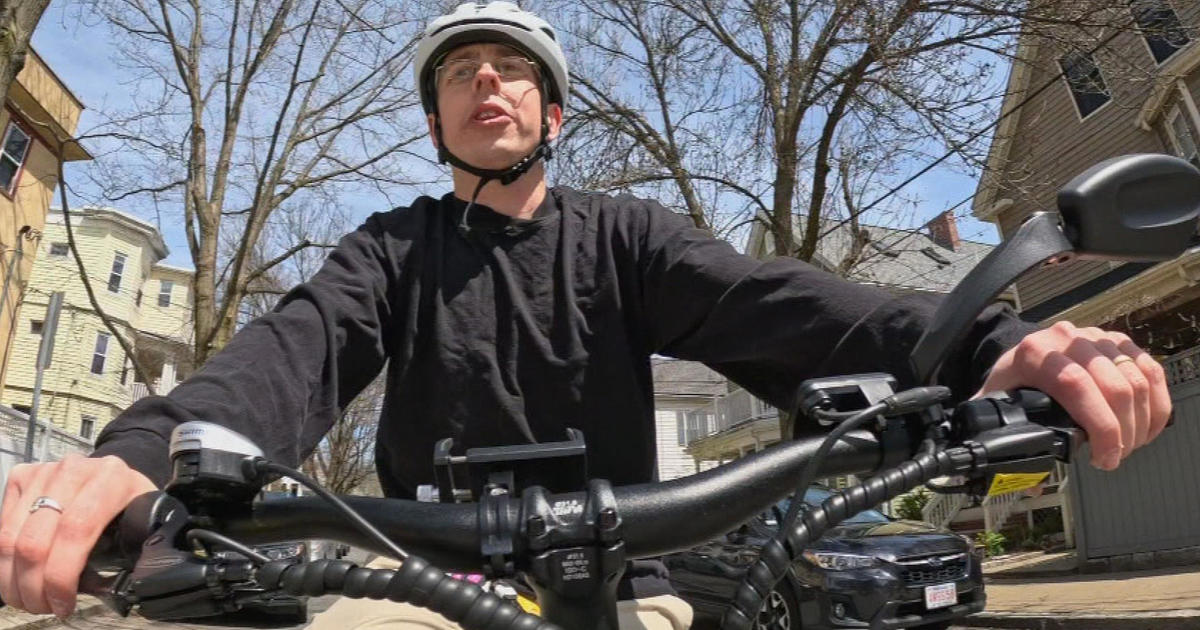Eye On Weather: Surviving Extreme Weather Outdoors
BOSTON (CBS) - It happens more often than you think - people getting caught off-guard in extreme winter weather right here in New England.
What if you got stranded in the woods? Would you have what it takes to survive?
Some of the harshest winter weather in the world can be found just a few hundred miles north of Boston - on the summit of Mount Washington.
The New Hampshire Fish and Game Commission receives nearly 200 distress calls a year, many of which are from lost or stranded hikers.
Here's what to do if you were to become one of them.
CHECK YOUR ENVIRONMENT
"Just take a second and stop. Take a deep breath, maybe take some water out, and then you want to look around your environment," Paul Knight told WBZ-TV.
Knight is the co-founder and executive director of education and training of Oneworld Experience.
He says what you do ahead of time is critical.
"You don't have to go to out and build this massive pack to enjoy the outdoors. You can have a very small pack and still get a lot of the equipment that you need," Knight said.
WEAR APPROPRIATE CLOTHES
Selecting the appropriate clothing is vitally important.
"Before you start building a shelter or making a fire or doing anything, it all starts with preparation you did and it starts with the clothing you wear," Knight told us.
Wear clothes loose and in layers so you can adjust your layers depending on the temperature.
"The biggest thing we suggest is that no matter how long you're going for, you have a way to spend the night, whether it's a trash bag or something more involved," said Josh MacMillan, the assistant director of education at Solo, the oldest continuously operating wilderness medical school in the world.
SHELTER AND FIRE
So, I wanted to test my limits in a survival situation.
My first priority was gathering dry wood for a fire before the sun sets.
Next, and most importantly, I had to build a good shelter.
It is tougher than it looks. You'll need to take your time, construct it low to the ground, and keep it as snug as possible.
To stay warm, be sure there's a layer between you and the ground.
Once your shelter is built, get that fire going. A basic cotton ball coated in Vaseline is a perfect tinder source.
"If you have that buddy system in play, it becomes a lot more survivable if you do have an injury happen compared to if you're by yourself, it's not a much bigger crisis," MacMillan told WBZ.
WHISTLE AND GLOW STICK
Other things to keep in mind: three whistle blasts in a row are the international sign of distress and a simple glow stick tied to a string is a great way to grab attention in the dark.
But above all, your chance of survival in a serious situation increases dramatically if you remember this.
"The most important thing you can have beyond all this equipment is a will to survive. A reason that you're going to overcome your situation and a positive mental attitude," Knight said.
ADDITIONAL TIPS
Knight focuses on the acronym: "Few Survivors Find Fast Solutions Now" :
Fire
Shelter
Food/Water
First Aid
Signals
Navigation
You don't want to over-pack because the heavier your pack becomes, the more tired you'll get while hiking. There are a lot of multi-use items that accomplish all the tasks you need.
Knight said that, in a worst case scenario, as long as you're dressed appropriately, you can hunker down underneath the base of a tree for the night and put a layer between yourself and the ground (even if it's your jacket).
In terms of weather-related first aid issues, MacMillan said hypothermia and frostbite are the most common occurrences. When your core body temperature drops below 96 degrees you start to feel mild effects of hypothermia; around 94-to-95 degrees a person's fine motor skills and speech will start to be impaired.
"As they get down to 93, 92 degrees, you're going to start to see some gross motor impairment, you're going to see further speech impairment and now they're really becoming unable to help themselves," MacMillan told WBZ.
For frostbite to develop, the actual air temperatures has to be 32 degrees or less whereas hypothermia can actually occur in the middle of summer!
And don't forget the basics.
For instance, if you injure yourself, compacted snow can be used as ice to reduce swelling.
If you sustain a fracture, stabilization is key.
For more information on wilderness survival and medical courses and classes, visit experiencetheworld.org and soloschools.com.
MORE LOCAL NEWS FROM CBS BOSTON




